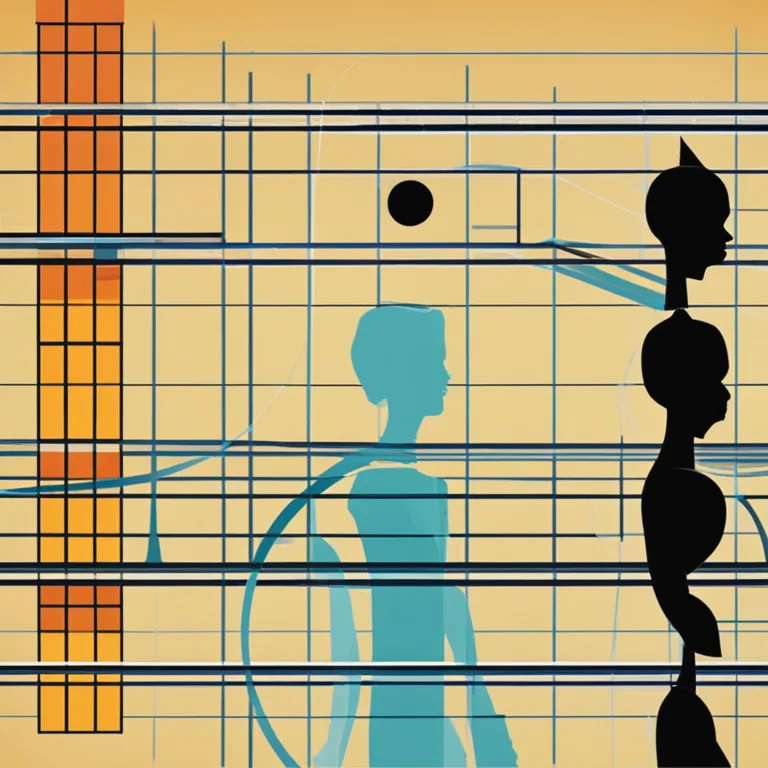
The Biorhythm Cycle: Patterns of Life Energy
Discover the essence of biorhythms, how they purportedly influence human life energy, and the cycles that define personal vitality, emotions, and intellect.
article by Adrian Wallace
Introduction to Biorhythm Theory
In the early 20th century, the concept of biorhythms emerged as a fascinating theory that proposed the existence of innate cycles influencing various aspects of our physical, emotional, and intellectual capabilities. According to this theory, from the moment of birth, humans embark on three distinct and continuous cycles: the Physical, Emotional, and Intellectual biorhythms. These cycles are thought to affect our daily lives, shaping how we perform, feel, and think. The notion gained popularity among those seeking to discern patterns within their personal energy levels and decision-making processes.

The Three Principal Cycles
Each biorhythm cycle has a unique duration: the Physical cycle lasts 23 days, the Emotional cycle spans 28 days, and the Intellectual cycle completes its rotation in 33 days. These cycles oscillate in a sine wave pattern, moving above and below a baseline which represents the equilibrium point. A cycle crossing above the baseline indicates a time of higher-than-average potential, while dipping below suggests a phase of lower capabilities. Supporters of the biorhythm theory often utilize this information to plan important activities or avoid decision-making during potential low phases.

Calculating Your Biorhythms
Calculating one's biorhythms used to require complex charting and manual calculations, but with the advent of digital tools and advanced biorhythmic software in 2024, individuals can now easily plot their cycles with just their date of birth. These calculations offer insights into when one might experience "highs" and "lows" in the three areas of life energy. Enthusiasts might also watch out for critical days when a cycle transitions from positive to negative or vice versa, which signifies more unpredictable and fluctuating energies.

Skeptical View and Scientific Scrutiny
Despite its appeal in certain circles, biorhythm theory is viewed with skepticism by the scientific community. Researchers argue that there is a lack of empirical evidence supporting the existence of these cycles and their supposed effects on human behavior and performance. Critics suggest that biorhythm calculations are no more predictive than chance, and they caution against relying solely on these patterns for significant life decisions, advocating instead for a more comprehensive view of the variables that impact our daily experiences.

Modern Applications and Consideration
Although biorhythms may lack robust scientific validation, the concept persists in popular culture and wellness practices. In 2024, with a growing emphasis on self-awareness and personal analytics, some people find value in considering their biorhythms as a component of holistic self-care. Whether as a tool for reflection or a fun, complementary practice, understanding one's perceived biorhythmic patterns can offer an additional lens through which to view personal well-being and development.
Conclusion: A Personal Toolkit
The biorhythm cycle stands as a fascinating if contentious, addition to the toolbox of self-optimization. Whether you lend it credence or approach it with a healthy dose of skepticism, tracking these theoretical cycles can prompt deeper self-inquiry and mindfulness. As we navigate the complexities of life, such frameworks—evidenced or not—sometimes offer a unique structure for introspection and planning in our relentless pursuit of balance and fulfillment.
Published: 12/28/2023
Modified: 12/28/2023
More predictions
Come back here soon to learn more about yourself and your future


Biorhythm Compatibility & Birthdays
Discover the intriguing connection between your birthday biorhythms and relationship harmony in our insightful article.


Navigating Biorhythm Cycles
Explore the concept of biorhythms, their cycles, and examples of how they influence our daily lives.


Exploring Human Biorhythmic Cycles
Explore the fascinating concept of biorhythms and their influence on physical, emotional, and intellectual faculties in humans.